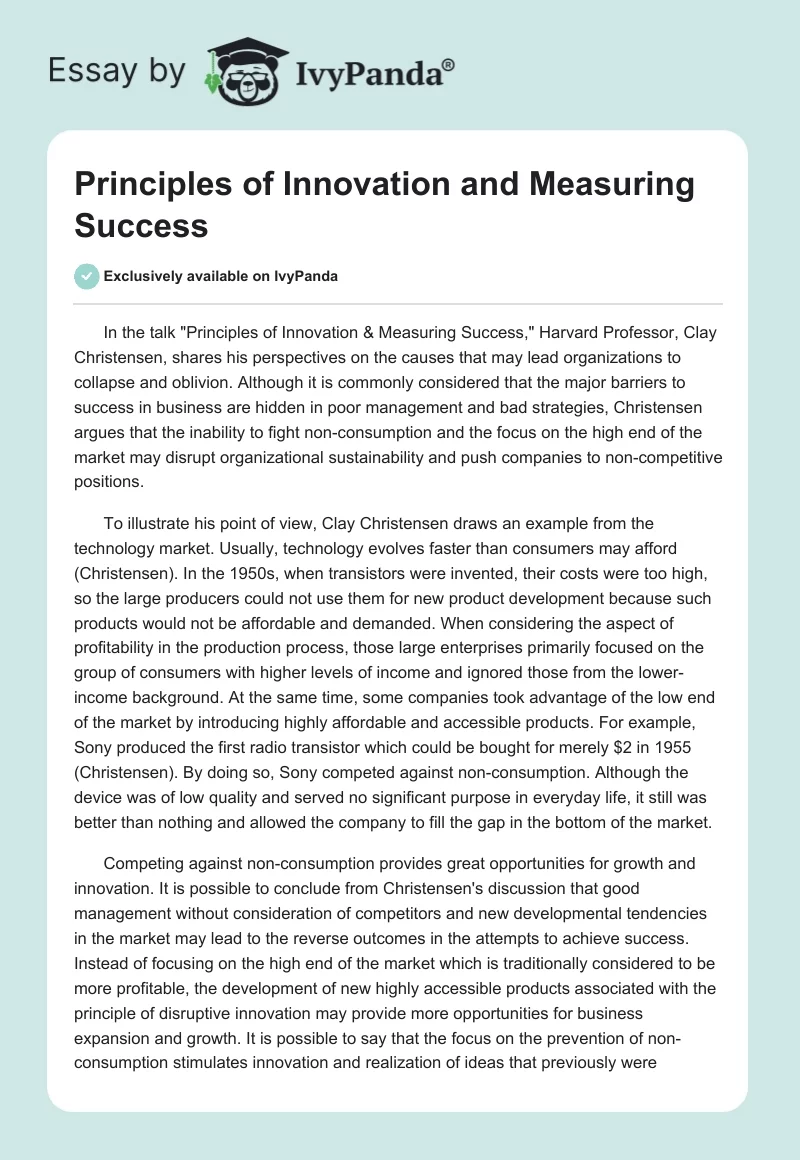In the talk “Principles of Innovation & Measuring Success,” Harvard Professor, Clay Christensen, shares his perspectives on the causes that may lead organizations to collapse and oblivion. Although it is commonly considered that the major barriers to success in business are hidden in poor management and bad strategies, Christensen argues that the inability to fight non-consumption and the focus on the high end of the market may disrupt organizational sustainability and push companies to non-competitive positions.
To illustrate his point of view, Clay Christensen draws an example from the technology market. Usually, technology evolves faster than consumers may afford (Christensen). In the 1950s, when transistors were invented, their costs were too high, so the large producers could not use them for new product development because such products would not be affordable and demanded. When considering the aspect of profitability in the production process, those large enterprises primarily focused on the group of consumers with higher levels of income and ignored those from the lower-income background. At the same time, some companies took advantage of the low end of the market by introducing highly affordable and accessible products. For example, Sony produced the first radio transistor which could be bought for merely $2 in 1955 (Christensen). By doing so, Sony competed against non-consumption. Although the device was of low quality and served no significant purpose in everyday life, it still was better than nothing and allowed the company to fill the gap in the bottom of the market.
Competing against non-consumption provides great opportunities for growth and innovation. It is possible to conclude from Christensen’s discussion that good management without consideration of competitors and new developmental tendencies in the market may lead to the reverse outcomes in the attempts to achieve success. Instead of focusing on the high end of the market which is traditionally considered to be more profitable, the development of new highly accessible products associated with the principle of disruptive innovation may provide more opportunities for business expansion and growth. It is possible to say that the focus on the prevention of non-consumption stimulates innovation and realization of ideas that previously were unimaginable. The innovative approach in the use of opportunities and scarce resources may allow organizations to create something that would transform the rules of business conduct and production, as well as the mode of life as a whole.
Works Cited
Christensen, Clay. “Principles of Innovation & Measuring Success.” Youtube. Stern Speakers, 2015. Video file. Web.


